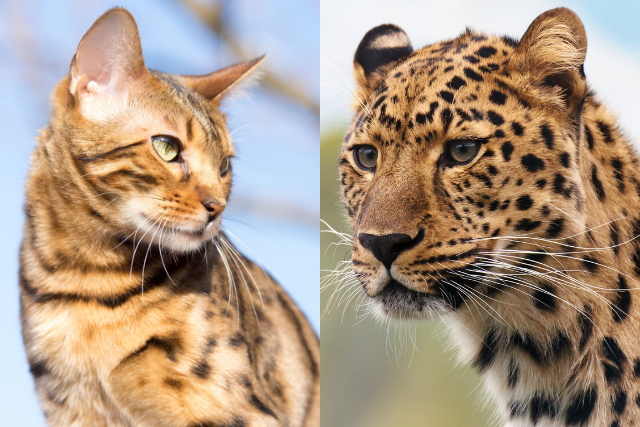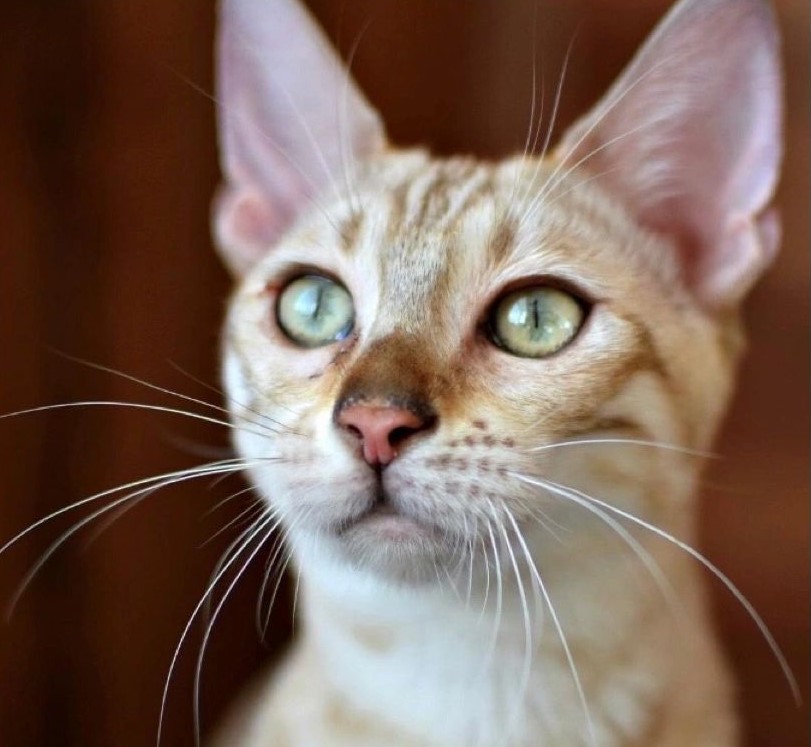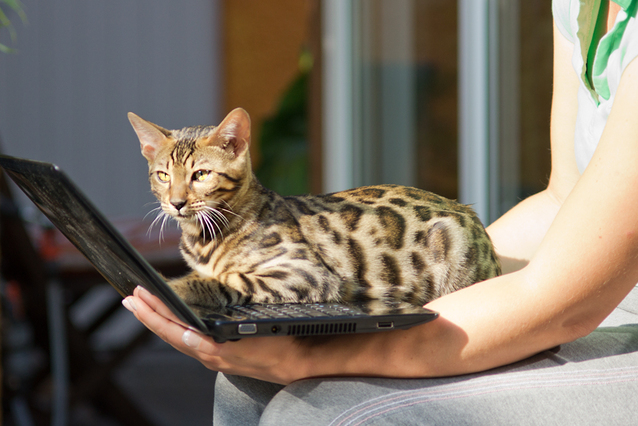
In this article, we’re going to look the various Bengal rosetted patterns that have appeared in the Bengal cat breed due to selective breeding over recent decades.
These rosetted Bengal patterns fall into distinct categories, with consistency and uniformity of one pattern on one animal hard to achieve.
When looking at kittens, the untrained eye may simply miss these, which may be fine if you’re only after a pet (although patterns and price are linked), but will be vital if you’re intending to become a Bengal breeder or to show animals.
For current pet owners, this guide will enable you to identify patterns found on your Bengal (I have since recognised some of them on min) and which wild cats breeders are/were trying to replicate.
Topic Overview
Bengal kittens and cats are strikingly beautiful and harbour a wild look about them.
This was the intention of breeder and conservationist Jean Mill.
She hoped that by creating a wild looking domestic cat, it would protect Asian leopard cats from being hunted for fur and from having their cubs stolen and sold as pets.
In the wild, the patterns on the fur of a cat are vital for its concealment, camouflage and confusing its prey.
Bengal cats fall into two main types of fur pattern- spotted and marbled, as shown below:
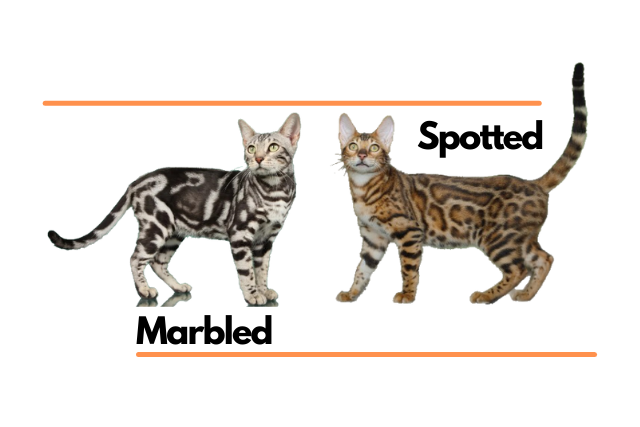
(A third has arisen- the ‘Sparbled’, which is a mix of both however the markings are not officially recognised).
Spotted varieties are more sought after than marbled and will in general cost more (see Prices of Bengal Cats: The Definitive Global(ish) Guide 2021).
Bengal breeders have taken the spotted pattern, and attempted to diversify it into more complex rosettes that resemble ‘big cats’ and fit a breed standard- which is only of concern if you want to win big at shows.
For the rest of us, it’s likely you’ll see or own a Bengal cat which has some or elements of the seven patterns listed below.
- Single Spots
- Arrowhead Rosettes
- Paw Print Rosettes
- Doughnut/Donut Rosettes and Pancakes
- Clouded Rosettes
- Cluster Rosettes
- Embryonic Rosettes
Now that we know the different categories, let’s explore each further starting with the pattern my Bengal kitten has running across her belly…
Single-Spots

Single-spots are common amongst Bengals.
These are spots/blobs of a uniform colour that contrast with the background coat.
Chances are, Bengals sold as pets will have a good few of these on their body.
The big cat equivalent would be the markings found on a Cheetah.
Single-spots are abundant.
Not so much the next pattern…
Arrowhead Rosettes
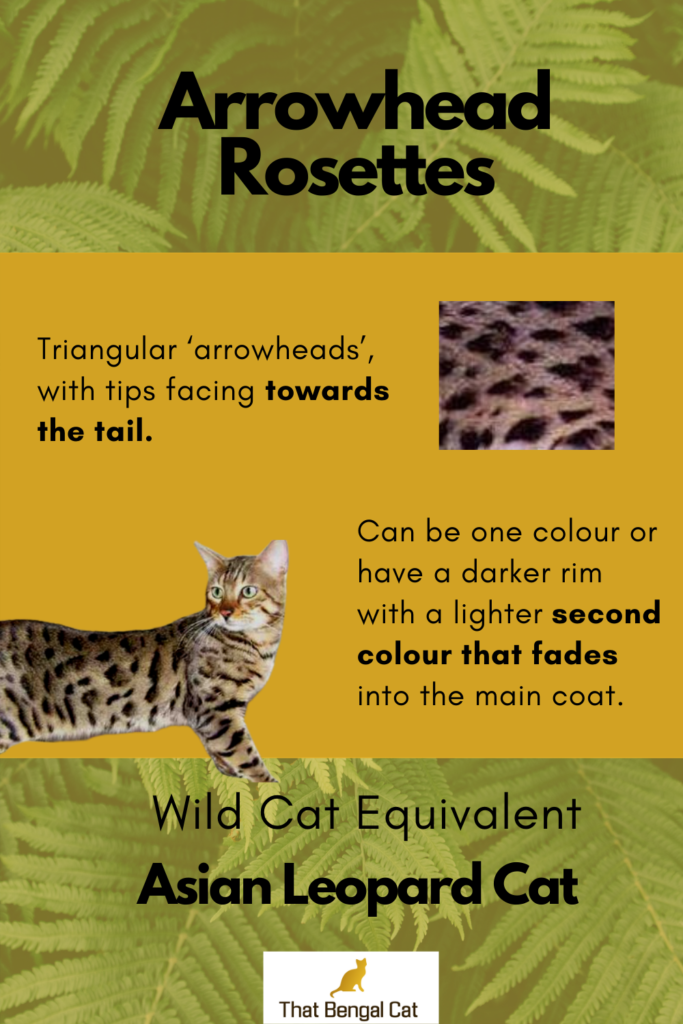
Arrowhead rosetted Bengals are considered highly desirable in the Bengal breeding community, as well-defined examples are rare.
As the name implies, the rosettes form a triangular ‘arrowhead’, with the tips facing away from the cat’s head and pointing towards the tail.
They too can be all one colour, like single-spots, or have a darker rim with a lighter second colour that fades into the main coat.
Arrowhead coat patterns can be found on some Asian leopard cats, which of course, were originally crossed with domestic cats to create the Bengal breed.
We’ll now look at a pattern that is an attempt to reflect a more commonly known big cat…
Paw Print Rosettes

No points for guessing what these are supposed to resemble.
Yes, paw print Bengal rosetted patterns are formed by a lighter patch of fur (the ‘paw pad’) surrounded by darker ‘toes’.
These ‘toes’ are distinct and have visible distance between them, although they don’t actually form a genuine paw pattern, well not from any animal I’ve seen anyway…
The aim by Bengal breeders here is/was to replicate in miniature, the markings of a Leopard.
Don’t tell Homer Simpson about the next rosette type…. not that he can hear you, he’s not a real person…
Doughnut/Donut Rosettes and Pancakes
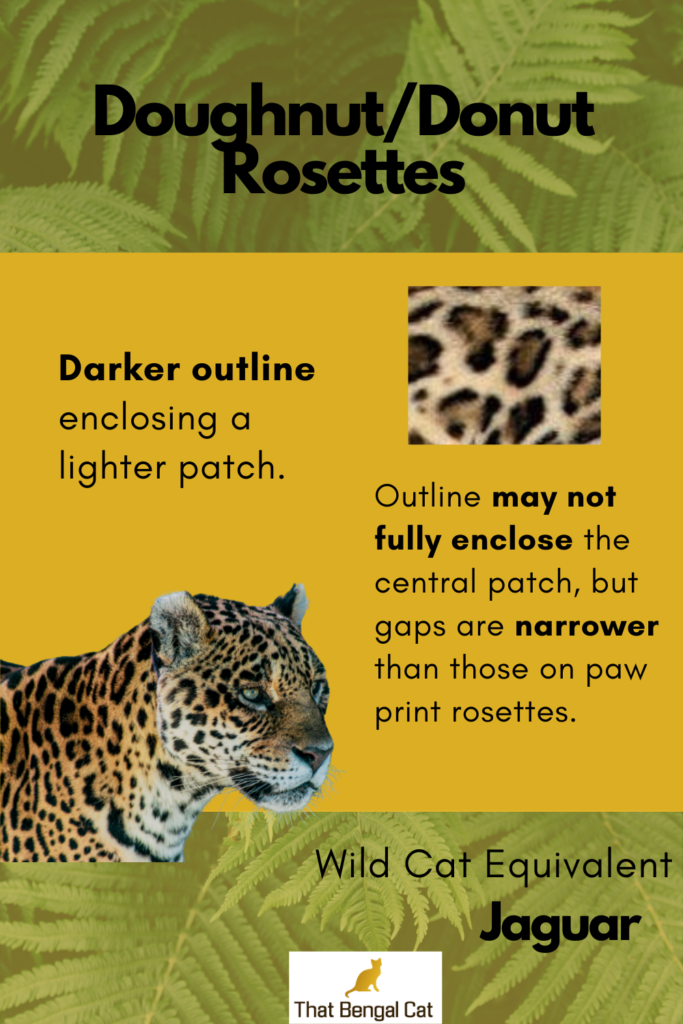
Doughnut or donut rosettes (depending on where in the world you’re from) are a recent development in the Bengal cat coat world, taking years of selective breeding to achieve.
They too have a lighter central patch, but differ to paw print rosettes in that they have a darker perimeter which encloses the lighter patch (as opposed to ‘dark toes’).
This perimeter may not fully close the central patch, but any gaps are much narrower than those on a paw print rosette.
Doughnut/donut rosettes can form linked, horizontal chains- so- called chain rosetting.
These run along each side of the cat’s spine, and good examples are found in Ocelots.
Pancake rosettes differ to the doughnuts/donuts in that are generally larger but have a thinner outline.
Jaguars were the template for this pattern.
The final major rosetted Bengal pattern is arguably the strangest of all….
Clouded Rosettes
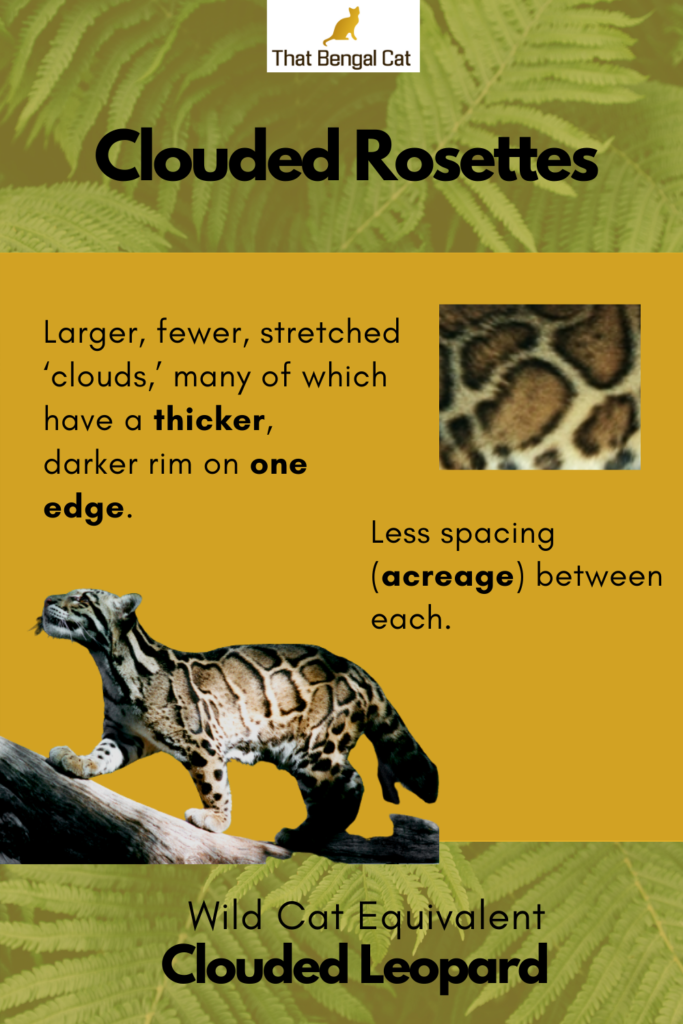
The Bengal rosetted pattern features here is more unusual in that it doesn’t really look like something you would call rosetted at all.
This category comprises of larger, less numerous, stretched ‘clouds,’ many of which have a thicker, darker rim on one edge.
There is also less spacing (known in the business as ‘acreage’) between each.
Breeders here aim to create rosetted Bengals with the pattern found on the coat of the Clouded Leopard, which is one of the smaller-sized of the big cats.
You’d be forgiven for mistaking the pattern I’ll cover next for one already discussed…
Cluster Rosettes
These are similar to the aforementioned paw print rosettes.
As with paw print, they consist of a darker, pad-like patch surrounded by darker spots.
The key difference, although I’ll admit, I found it hard to tell with some of them, is that cluster rosettes have a darker spot within the pad and the surrounding spots are dotted around the outside in clusters (without the ‘open end’ you would see on a paw print’).
The final category didn’t feature much at all in my research, but is still worth a mention…
Embryonic Rosettes
I could find very little about this pattern.

In fact, the descriptions for it were pretty much the same (as in word for word) wherever I looked.
Embryonic rosettes then are essentially spots with that show a second colour (or true rosette) beginning to form.
The example given was that of an Embryonic Arrowhead, as shown.
Bengal Rosetted Patterns Summary
This beginner’s guide has hopefully equipped you with more knowledge surrounding the rosette patterns you will see on the Bengal cat breed.
These patterns can have a direct impact on price even for those wanting a ‘pet quality’ Bengal kitten.
And anyone interested in breeding Bengals for showing must pay particular attention to changes in breed standard and demand with regards to rosetting.
For most of us, this guide will give added appreciation into just how rare and unique each Bengal is, and highlights how close they are to their wild, Asian leopard origins.
With the Bengal breed being relatively new, it will be interesting to see how these patterns develop in future generations and just how closely they will resemble the ‘big cats’.
So which Bengal rosetted pattern do you prefer?
Further Reading:

